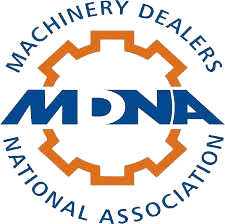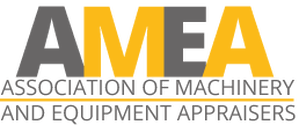Exploring Common Problems And Possible Solutions In Semiconductor Manufacturing
Semiconductors form the backbone of modern electronics and technology. The tech behind the manufacturing of semiconductors has improved leaps and bounds over the decades. Smaller chips and better performance are becoming the norm. However, as semiconductor manufacturing continues to improve, the challenges faced by the sector are also increasing rapidly. This blog will explore some common but pressing problems faced by the manufacturing industry and how digital encoders and other smart solutions can solve these issues in real-time.
Problems Plaguing Semiconductor Manufacturing
1. Increase In Speed And Risk
Increasing throughput is always something to aspire to for semiconductor manufacturers. However, it comes with its own set of risks. For instance, if a semiconductor testing machine improves its throughput from 100 wafers per hour to 200 wafers per hour, it doubles its production speed and reduces the total cost of ownership. But, in doing so, it runs the risk of decreasing the accuracy and precision of the entire process.
Another factor affecting the overall accuracy of the machine is the heat production. The faster the machine runs, the more likely it is to overheat. The main problem with this increased heat is the thermal expansion of components, as the machine is made of metals or alloys such as aluminum, silicon, or steel. Therefore, its accuracy can be adversely affected. Finally, since the process requires utmost accuracy and precision, even the smallest of changes can severely alter the effectiveness of the semiconductor.
2. More Cabling And Mounting Issues
While motion control systems used in semiconductor manufacturing are great at their assigned task, they create logistical problems in the form of increased cable lengths. In fact, this moving bundle of cables used in semiconductor manufacturing equipment can extend up to a mile in some facilities. While the digital encoders used in this context are excellent in providing data, the number of encoders also increases the cabling, further complicating the mounting and maintenance process.
The next section will broadly cover solutions to address these issues.
Combatting Semiconductor Manufacturing Issues
1. Incorporating Smart Solutions
To tackle the issue of not compromising accuracy and decreasing cabling, semiconductor manufacturers must look at smart solutions. Smart solutions can be defined as solutions that leverage the use of the latest technology to increase throughput and process data more efficiently. The idea is to create a system that can process more wafers without losing accuracy and install more sensors for more data without increasing cabling. Lastly, smart technology is also designed to reduce the overall cost of operation by addressing these variables.
2. Focusing On Increasing Precision
The next way to address these issues is to focus more and more on increasing precision. This means precision in the range of sub-10 nanometers in some cases. The latest wafer manufacturing technology, such as Extreme Ultraviolet (EUV) lithography, requires an extreme amount of accuracy and precision. This translates to little to no margin for error for encoders and other motion control systems. They must be able to expertly sense the location of the wafer in three-dimensional space.
Solutions To Combat The Issues With Semiconductor Manufacturing
1. Improving Accuracy With Specialized Calibration
A key part of increasing the accuracy of a digital encoder during semiconductor manufacturing is focusing on calibration. The incorporation of a special substrate as a mounting base for the encoders saw a significant improvement in measuring accuracy when compared to more traditional encoder options. With this extreme level of feedback and accuracy, semiconductor manufacturers can calibrate their machines in the order of nanometers, thereby keeping pace with the latest trends in this sector.
2. Improvement In Positioning Accuracy
Another dimension to increasing accuracy in the semiconductor manufacturing sector lies in how accurate the information provided by encoders really is. Heidenhain’s linear encoders are perfect in this regard, as they can measure even the slightest of variances. This is done by measuring movement that occurs perpendicular to the main direction of movement. Therefore, since even the slightest deviation is spotted, it is that much easier to re-adjust machines, thereby improving accuracy at high production speeds. This is a significant improvement over conventional digital encoders that got compromised at high throughputs.
3. Improving Operational Logistics With Better Interface
One of the major problems with linear encoders, optical linear encoders, rotary encoders, or any type of digital encoders in this industry lies in the sheer volume of cables that come along with them. This not only makes the whole operation more challenging, but it also increases the weight of the encoders and indirectly compromises their positioning accuracy. A proper encoder-to-controller interface, such as EnDat 3, which is used in most Heidenhain digital encoders, solves this issue by ensuring a fast, smooth interface with the aid of a single cable.
Want to know more about linear encoders? Contact us at Walker Machinery today. As a leading distributor of digital encoders in Milton, Ontario, we also offer rotary encoders, angle encoders, milling machine accessories and more, apart from linear encoders. To learn more, give us a call at 905-876-0890 today to obtain a free quote.





